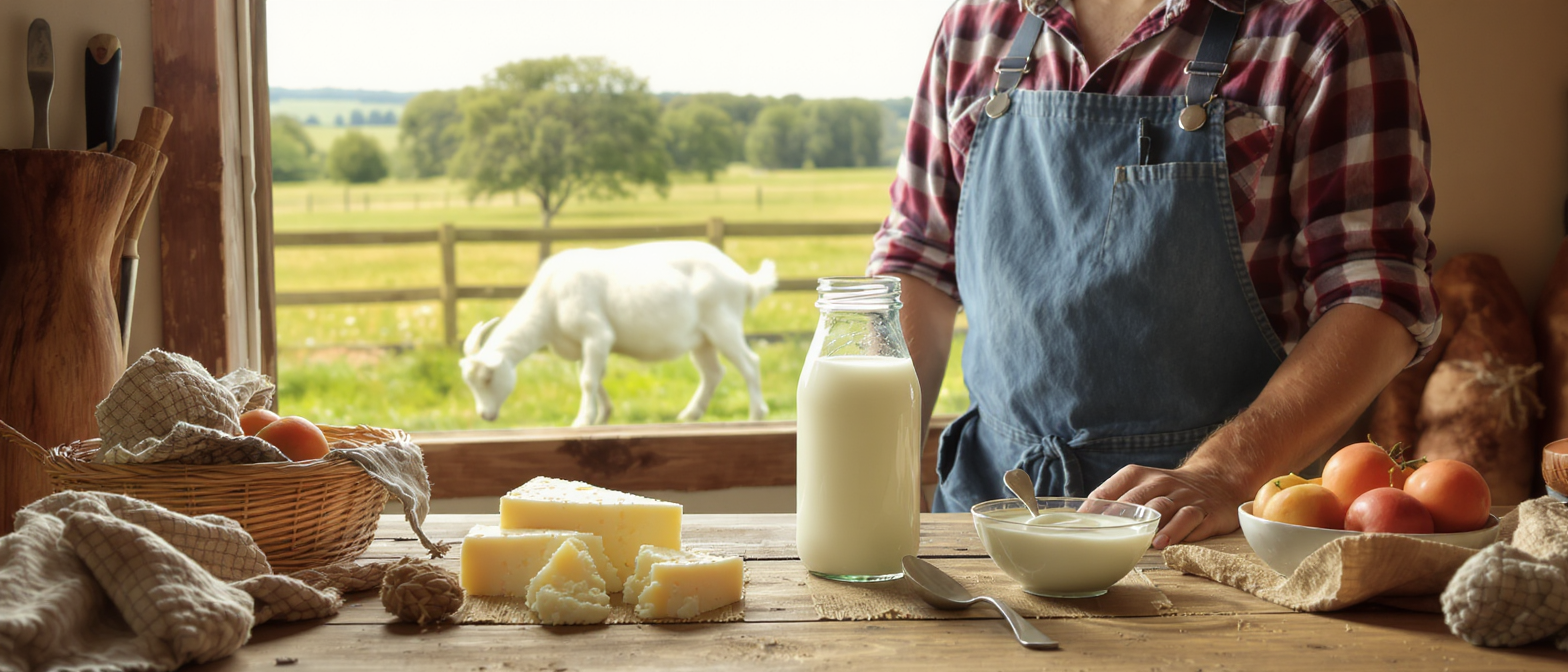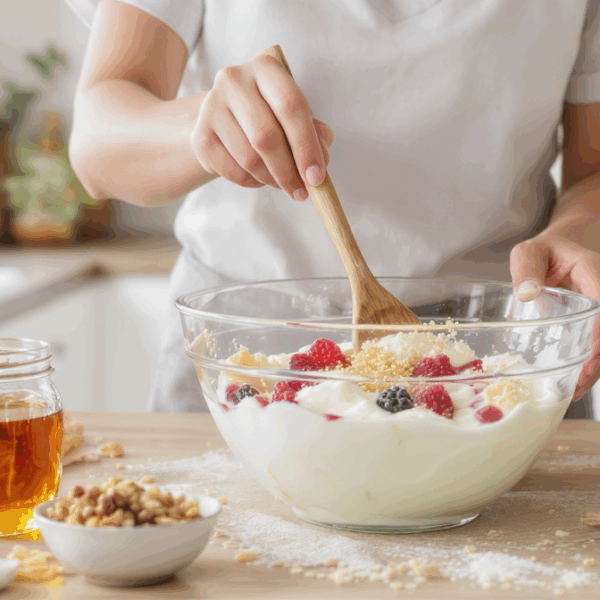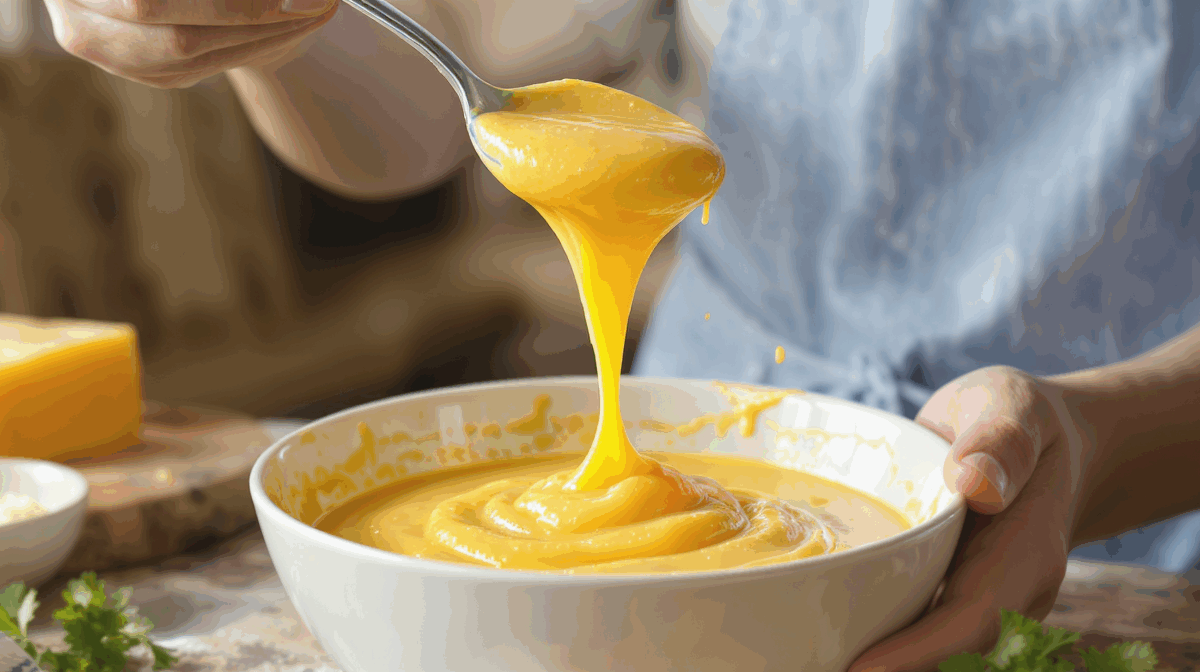Content
- 1 The definition of dairy and why goat milk falls under this category
- 2 Goat milk vs cow milk: Nutritional benefits and milk differences
- 3 Lactose intolerance and allergies: How goat milk compares to traditional dairy products
- 4 Environmental impact and sustainability of goat milk production compared to cow dairy farming
- 5 Versatility of goat milk in culinary uses and dairy alternatives market trends
As the world shifts towards more sustainable and health-conscious dietary choices in 2025, goat milk has emerged as a fascinating option for many people. Questions like “Is goat milk dairy?” or how goat milk compares to traditional cow milk have become common points of curiosity among families, especially those looking for natural and nutrient-rich alternatives. Goat milk isn’t just another “milk alternative” – it comes from a mammal just like cow milk, making it a dairy product by definition, but with many distinctive features that set it apart. From the way goat milk is digested, to its unique milk composition, and even its growing role in sustainable agriculture, the story of goat milk is as rich and varied as the recipes it inspires.
In recent years, more families embracing frugal living and homesteading practices have shared personal experiences about making the switch to goat milk. Whether raised on a small farm or adopted into the family pantry through specialty grocery stores, goat milk offers a blend of health benefits and ecological sensibility that make it highly attractive. This article explores how goat milk truly fits into the larger world of dairy products, diving into its nutritional profile, milk benefits, and why it is increasingly favored over other milk alternatives.
Understanding these differences is crucial not only for those with dietary concerns like lactose intolerance, but also for anyone seeking to enrich daily nutrition sustainably and deliciously. Ready to uncover what makes goat milk a powerful, natural option in the dairy spectrum? Let’s break down the details.
Key points to consider when choosing goat milk over other dairy and milk alternatives:
- 🐐 Goat milk is classified as a dairy product because it is milk produced by a mammal.
- 🥛 It contains lactose, but generally in lower amounts than cow milk, benefiting sensitive stomachs.
- 🌱 Goat farming has a smaller environmental footprint, aligning with sustainable living principles.
- 💪 Nutritionally, goat milk offers higher levels of calcium, potassium, and vitamin A compared to cow milk.
- ⚖️ Its protein and fat structure improve digestibility and may reduce allergic reactions for some individuals.
- 🥄 Goat milk comes in many versatile forms: fresh milk, cheese, yogurt, kefir, and more.
The definition of dairy and why goat milk falls under this category
Before diving into any specific comparisons, it’s vital to clarify the meaning of “dairy.” The word “dairy” refers broadly to milk and products made from the milk of mammals. These mammals include cows, goats, sheep, buffalo, and camels. Since milk is a secretion produced to nourish a young mammal, any milk derived from such an animal automatically qualifies as a dairy product.
Goat milk is no exception. It is sourced from domestic goats (Capra aegagrus hircus), mammals that have been providing milk to humans for thousands of years, especially across the Mediterranean, Middle East, and parts of Asia. This makes goat milk an authentic member of the dairy family, alongside more familiar cow milk. Goat milk products — from cheeses like chèvre to yogurts — all sit firmly within the dairy category.
To illustrate this, consider a quick comparison:
| 🐐 Milk Source | 🍶 Mammalian Milk? | 🥛 Classified as Dairy? |
|---|---|---|
| Goat | Yes | Yes |
| Cow | Yes | Yes |
| Almond | No | No |
| Oat | No | No |
The mammalian origin of goat milk explains immediately why it cannot be considered non-dairy or a typical “milk alternative” like almond or soy milk. The term milk alternatives usually refers to plant-based drinks that do not fall under the dairy umbrella since they do not come from mammals.
Lists of major dairy products derived from goat milk include:
- 🍥 Fresh and pasteurized goat milk for drinking.
- 🧀 Goat cheese varieties — soft chèvre, aged goat cheeses, and cream cheeses.
- 🍦 Goat milk yogurt and kefir, prized for their probiotic benefits.
- 🧼 Skincare products infused with goat milk, leveraging its nourishing quality.
Any dairy-related question about goat milk hinges on this fundamental understanding: goat milk is a dairy product, just like milk from cows and other mammals.
Goat milk vs cow milk: Nutritional benefits and milk differences
One of the reasons goat milk is gaining traction in homes and farms is the growing appreciation of its unique nutritional properties compared to cow milk. Both are complete foods packed with essential nutrients, but their composition impacts digestion, allergy potential, and milk benefits in distinct ways.
To start, here is a detailed nutritional overview comparing goat milk with cow milk (values per 1 cup, 240 ml):
| 🥄 Nutrient | 🐐 Goat Milk | 🐄 Cow Milk |
|---|---|---|
| Calories | 168 | 150 |
| Total Fat | 10 g | 8 g |
| Calcium | 330 mg | 275 mg |
| Vitamin A | Higher content | Moderate content |
| Lactose | Lower | Higher |
| Protein Type | A2 casein dominant | A1 casein dominant |
✨ Benefits highlighted by these differences include:
- 🐐 Smaller fat globules in goat milk make it naturally homogenized and easier for the digestive system to process.
- 🧩 The types of proteins, especially lower alpha-S1 casein in goat milk, often lead to fewer allergic reactions compared to cow milk.
- 🥛 The lower lactose content generally enhances tolerance for those mildly sensitive to lactose.
- 💪 Goat milk is a richer source of minerals like calcium, phosphorus, and potassium, essential for bone and muscle health.
- ✨ Vitamin A levels support immune function and skin health robustly in goat milk consumers.
These differences mean goat milk often digests faster, causing less gastrointestinal discomfort and bloating, which many families report. The unique milk composition also supports sustainable metabolism, potentially aiding weight management.
Goat milk’s texture is smooth and creamy, and when fresh and well-managed, it carries a mild, slightly sweet flavor rather than the “goaty” taste people often fear. This makes it a versatile ingredient, appearing in everything from everyday drinking milk to gourmet cheeses and probiotic-rich yogurt.
Lactose intolerance and allergies: How goat milk compares to traditional dairy products
One of the most common reasons people question if goat milk is dairy stems from concerns around lactose intolerance and milk allergies. Understanding these conditions’ relationship with goat milk helps clarify whether it’s an appropriate dairy choice for sensitive individuals.
Lactose intolerance is a digestive disorder caused by the body’s reduced ability to break down lactose, the sugar found in all mammalian milk. While goat milk contains lactose, it generally has lower levels compared to cow milk, and its easier digestibility allows some people to tolerate it better. The smaller fat globules and different protein structure, especially the presence of A2 casein instead of A1, reduce symptoms such as cramps, bloating, and gas for many who struggle with cow milk.
However, it’s important to remember that goat milk is not lactose-free and extreme lactose intolerance sufferers may still experience discomfort. In such cases, plant-based milk alternatives like almond or oat milk remain the safest options.
On the allergy front, many milk allergies arise due to proteins, particularly alpha-S1 casein, found in cow milk. Goat milk contains significantly less of this protein, resulting in a lower incidence of allergic reactions. Still, allergic responses to goat milk can occur, so those with known dairy allergies should proceed carefully and consult healthcare providers.
This nuanced difference explains why many parents exploring milk options for their children choose goat milk-based formulas designed to address infant nutritional needs, while regular goat milk is not advised for infants under 12 months due to folate and vitamin B12 deficiencies.
- 🍼 Goat milk formulas are specially fortified to provide essential nutrients missing in pure goat milk for babies.
- ⚠️ Direct goat milk consumption by infants requires caution; it lacks specific vitamins critical for early development.
- 🌿 Sustainable farming practices producing goat milk appeal strongly to families who value environmental stewardship.
In 2025, millions globally appreciate goat milk for these health-related differences, integrating it into diets without compromising digestive comfort or risking allergy flare-ups for many individuals.
Environmental impact and sustainability of goat milk production compared to cow dairy farming
Today’s consumers are more aware of environmental footprints than ever before, and the surge in goat milk’s popularity aligns with its eco-friendly profile. Compared to traditional cow dairy farming, goat milk production requires fewer natural resources and emits less environmental impact per liter produced, making it appealing for sustainable living advocates.
Key environmental advantages of goat milk farming include:
- 🌎 Lower water consumption: Goats require significantly less water than cows, reducing strain on local water supplies.
- 🏞️ Less land required: Goats adapt well to smaller pastures and harsh terrains, allowing more efficient use of agricultural land and reducing deforestation pressures.
- 💨 Reduced methane emissions: Goats produce less methane, a potent greenhouse gas, compared to cows.
- ♻️ Soil biodiversity: Goats contribute to improved soil health through rotational grazing, promoting ecological regeneration.
Small-scale and family-run goat farms are often the norm, emphasizing traditional, ethical, and sustainable practices rather than industrialized farming. This model resonates with individuals committed to local food production and reducing carbon footprints in 2025 and beyond.
Though goat milk yields less volume per animal than cows, the cumulative environmental benefits are substantial. With increasing demand, these impacts are drawing attention from food sustainability research and policy frameworks, encouraging expansion of goat milk production in eco-conscious communities.
| 🌍 Sustainability Factor | 🐐 Goat Milk Production | 🐄 Cow Milk Production |
|---|---|---|
| Water Usage per liter | Lower (around 50% less) | Higher |
| Land Requirements | Minimal and adaptable | Extensive pasture needed |
| Methane Emissions | Significantly less | Higher |
| Farming Scale | Small to medium family farms | Often large industrial farms |
Choosing goat milk fits well with a holistic approach to more resilient, independent living, where personal health ties directly to environmental well-being.
Versatility of goat milk in culinary uses and dairy alternatives market trends
The appeal of goat milk also lies in its versatility. Far beyond a simple drink, goat milk products enrich cuisines and lifestyles worldwide, reflecting diverse cultural palates and modern nutritional priorities.
Here are some popular goat milk dairy products and culinary uses thriving in 2025 markets:
- 🧀 Goat cheese: Creamy and tangy cheeses that serve as flavorful staples in salads, spreads, and entrees.
- 🍶 Fresh and pasteurized goat milk: Used for daily drinking and cooking, appreciated for its gentle digestibility.
- 🍦 Yogurt and kefir: Rich in probiotics, supporting gut health naturally.
- 🧴 Skin care products: Soaps, lotions, and creams made with goat milk to nurture sensitive skin.
- 🥛 Powdered goat milk: Convenient for travel and storage, maintaining nutritional qualities.
The global market for goat milk products has expanded rapidly, with an 18% increase in consumption in just two years according to the Global Dairy Council. This surge reflects consumers’ prioritization of nutrient availability, digestion-friendly milk differences, and environment-friendly sourcing compared to many milk alternatives.
Cooking with goat milk can bring unique flavors and textures to traditional dishes. Because of its slightly sweet and creamy profile, it lends itself well to baking, making sauces, or enriching soups. Some chefs incorporate goat milk ice cream and desserts as tasty, wholesome treats. Yet its distinctive taste means first-timers benefit from gradual exposure – starting with goat dairy like yogurt or cheese before regular consumption.
| 🍽️ Goat Milk Product | 🌟 Popular Use | 🥇 Key Benefit |
|---|---|---|
| Fresh/Pasteurized Goat Milk | Daily drinking and cooking | Easier digestion, mild flavor |
| Goat Cheese | Salads, spreads, gourmet dishes | High calcium, rich taste |
| Yogurt/Kefir | Breakfast and probiotic snack | Supports gut health |
| Skincare Products | Bathing and moisturizing | Moisturizes and soothes skin |
| Powdered Milk | Travel and shelf storage | Convenient nutrition |
Is goat milk considered dairy?
Yes, goat milk is considered dairy because it is milk produced by a mammal and contains lactose and proteins typical of mammalian milk.
Can people with lactose intolerance drink goat milk?
While goat milk contains lactose, its lower levels and different protein composition can make it easier to digest for some with mild lactose intolerance. However, it is not suitable for those severely lactose intolerant.
Does goat milk cause allergies?
Goat milk has lower levels of alpha-S1 casein protein, which may reduce allergic reactions compared to cow milk, but allergies can still occur in sensitive individuals.
Is goat milk better than cow milk nutritionally?
Goat milk offers higher calcium, vitamin A, and potassium levels, and its unique fat and protein structure aid easier digestion, lending it nutritional superiority for many people.
Can infants consume goat milk?
Direct consumption of goat milk is not recommended for infants under 12 months due to lack of folate and vitamin B12, but specially fortified goat milk formulas can be safe with pediatric guidance.







